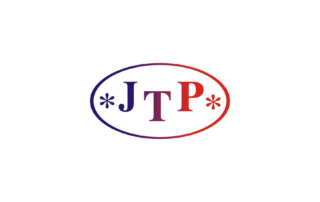“What do you mean you’re not qualified to translate legal texts? But you’re a translator, aren’t you?”
“We’ve got an urgent job for you. We need this document RETYPED into Russian. How long will that take?”
“Can you translate it for me today, pls? It will take you 15 minutes tops!”
Raise your hand if you haven’t heard or seen these before. Yeah, right. No matter if you’re just entering the profession or have X years of experience, at some point you’d be forced to face the fact that people often hold completely misguided beliefs about what translation job involves. Below are some of the most ubiquitous translation myths.
The most common translation myths
Anyone who speaks a foreign language is fit for the job.
Having perfect command of a foreign language does not necessarily make you a good translator. Language fluency, good grammar and vocabulary-building skills or having a knack for the written word are only a part of the necessary competences a professional translator should have. What’s equally important are cultural awareness, deep understanding of specialist areas of expertise and a thirst for knowledge. On top of all that, you often need creativity to successfully put new ideas, conceptions and experiences into words in another language.
Any translator can translate just about everything.
Professional translators often specialize in one or a few fields of knowledge. Choosing a specific specialization often reflects their interests or personality. Some people are better fit for translating poetry, other prefer highly technical texts because they know the field and stay up-to-date when it comes to recent developments in that particular area.
Translating is just typing in another language.
There’s much more to the art of translation than just replacing words with their equivalents in another language. Besides, there is often no one-to-one correspondence. As it was said before, cultural references and context play an important role. A skillful translator must be able to find a way to present an idea or a concept unknown to their audience.

Good translators should be fast.
Delivering a good quality translation is rarely a quick process. Apart from the translation process itself, it often involves a great deal of document preparation, fact checking, proofreading and post-editing. With specialized texts, such as legal or medical translations, when there is a lot of responsability at stake, the translator often needs to consult certain terminology with experts in the subject in question. As a result, the entire process can be really time-consuming and require great attention to details.
Good translators don’t need dictionaries.
People who don’t know much about translation and languages in general often arrive at a false conclusion that mastering a language is final, and, as a person who has studied a particular language, a translator should know the meaning of every word.
No person, a translator or not, will ever be able to learn every word in a target language, nor their native source languge for that matter. The number of disciplines is just too overwhelming. Besides, languages are living things, constantly evolving and keeping track of all the changes that take place is a losing game too.
Translating a text from English to Spanish is just as easy as doing it the other way round.
Naturally, there are many translators who are good at translating texts in both directions, but generally speaking the number of professionals who are willing to translate documents or literary works into a non-native language isn’t that great. It all depends on the area you specialize in and the purpose of the document, but for most translators it’s easier to translate into their mother tongue, simply because they know it better and therefore making a text sound natural is less of a challenge.
Translating and interpreting is the same thing.
This is one of the most common translation myths and also one that couldn’t be further from the truth. Translating and interpreting are two completely different processes, each requiring a different set of skills and techniques. Translators deal with a written word and their job is often a thorough and time-consuming process. They usually translate texts into their native-language and can refer to dictionaries and other resources when doing so.
Interpreters, on the other hand, work on the spot helping people to communicate verbally, and therefore need to be able to translate both into their native language and vice versa. They need to be quick, concise and be able to predict what the speaker wants to communicate.
Technology will make translators obsolete.
Machine translation engines are indeed becoming more impressive. However, it’s highly doubtful if they will ever be able to replace human translators. It is especially true about complex and sophisticated literary texts with lots of subtleties. Or technical documents where it is necessary to use accurate terminology and understand the context. Automated translation tools can be great for translating documents with simple sentence structure as some manuals, or for non-commercial use though.
If you enjoyed this article, read this post, where we debunk the CAT tool-related myths.










